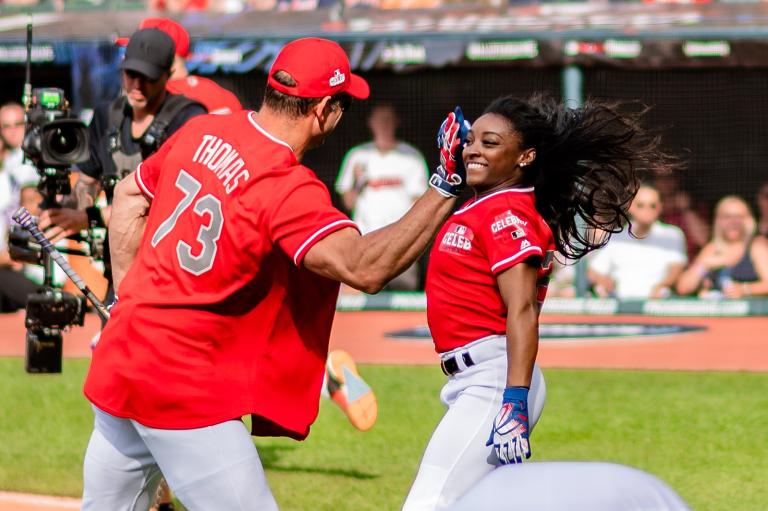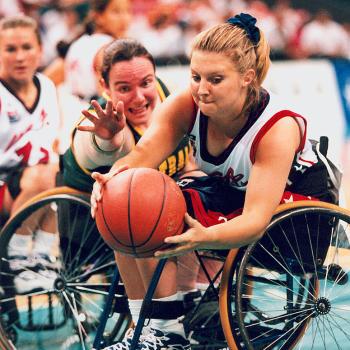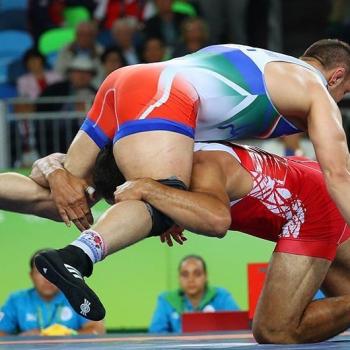I’d like to talk about sporting categories generally, and then look at a couple of specific situations for people with XY disorders of sexual development.
Update 8/4/24: See here for “Toward a Robust Definition of Sport Sex” by David J. Handelsman in Endocrine Reviews. Table 2 lays out all the variations in genetic and physiologic status for the purpose of determining how to categorize an athlete for elite sport. (To my knowledge everything I say below in simpler terms is consistent with this article.)
What are sports categories for?
Sporting categories exist in order to create opportunities for fair, enjoyable play for whoever the category was created for.
We create categories based on age, based on interest (recreational vs. highly competitive), based on budget (local vs. travel teams), based on resources (D1 vs. D3 schools), based on skill (C1 vs. C4 cycling), based on size (featherweight vs. heavyweight), based on physical ability, and also quite often (but not always) based on sex.
You can no doubt think of other categorization systems as well.
Aren’t the categorization rules sometimes unfair?
A frustrating reality of categorization systems is that they are imperfect. The child whose birthday falls just inside the maximum age-limit for a team has an advantage over the year-younger child who is also lumped in the same bracket.
Likewise, given the limited availability of teams, a newer, less skilled, or less physically adept child may struggle to find opportunities to play a given sport, due to restrictions on age or sex categories.
Shouldn’t categories be flexible to allow for these exceptions?
It all depends. Fortunately some less-competitive leagues will allow category exceptions, specifically in acknowledgement that a given player is of a fitting size and skill level for the team, despite not matching the general categorization.
Likewise, given a limited pool of athletes, there might be some mixing and matching of rules. For example, a youth team might be co-ed, but with older girls allowed to play in a younger boys’ age bracket, or younger boys allowed to play only if they move up to an older girls’ bracket.
Another example: I’ve been playing this summer in a co-ed hockey league that is for either 45+ or beginners, and the categorization is “you would like to play a chill, lower-contact, slower-paced game.”
In some situations, though, flexing category rules doesn’t work well.
Are there are important social reasons for the categorization?
Single-sex teams (and other groups) may have been created specifically for providing the unique mentoring and community-building that boys-only or girls-only groups provide.
Alternately, a team or league might be strictly-single sex due to religious or philosophical concerns about modesty or appropriate male-female interactions.
Changing it up: A team might be strictly co-ed because its physical, aesthetic, or social purpose centers on male-female pairs.
And moving on to other social purposes entirely . . . A team or group might be strictly lgbtq+ (or a subset), strictly for those in addiction recovery, strictly for children in foster care, etc., because it exists to create support and community for persons with experiences under some portion of the stated umbrella.
Is the category too hypercompetitive?
I wish I could say this is only a problem at the elite level, but there’s something about sports that brings out insanely, manically competitive behavior in otherwise seemingly normal people.
Thus unfortunately your local kiddie t-ball team or adult rec softball league might have to start checking birth certificates and enforcing strict eligibility requirements because the grown-ups have gotten so emotionally warped that they are determined to win at all costs, or at least go down trying.
When the stakes are higher — when scholarships, prize money, endorsements, fame, and advancement to the premier level come into play, then things can get extraordinarily nasty, fast. The only way to be as fair and sane as possible is to set clear categorization rules and stick to them.
How do the Olympics fit into all this?
The Olympics runs competitions for a limited number of sports, so there’s already a paring down of which athletes will ever have their accomplishments acknowledged at the Olympic Games.
Within that framework though, the Olympics has decided (rightly) to create sex-based categories, in addition to a few size-based categories such as for boxing. The Paralympics also uses ability-based classifications specific to each sport.
I think we can reasonably say that the sex-based categorization of Olympic sports is not for a purely social reason. It’s not to help young men and women to build community and social support with others of their own sex. The two categories exist because the goal of the Olympics is to see who is the very best in the world at a given athletic feat.
For nearly all Olympic sports, if there were not sex-based categorization, only men would qualify. The physical performance potential between males and females is massive, because human female bodies are designed to accomplish tasks that male bodies cannot do; in the survival tradeoffs, female athleticism takes a backseat to childbearing capacity.
And thus it becomes of interest: What can the very best-trained female athlete do? Just how far can a woman’s body go in pursuing a given athletic task?
Note very well: We don’t have to have elite women’s sports. We could decide that from birth through adulthood, girls and women will simply play in the co-ed league that matches their ability level, and that will mean the best females will do quite well at the recreational level, end of movie.
If that is your stance, say so.
Those of us who support the existence of female-only sports beyond the recreational level believe that it is good and worthwhile for women to be able to see just how far a female body can go. This requires strict sex-segregation.
An aside on safety and bodyweight:
–> In some sports there may also be safety hazards at play, as there is a significant gap between the size and power of the largest and strongest men compared to the largest and strongest women.
Likewise, in sports with bodyweight categories, a male of the same weight as a female opponent will have greater physical power, and at the very least should play up to a higher bodyweight category to offset the male physical advantage in strength-to-weight ratios.
I mention these two factors because they are equally pertinent to the examples that follow, and would also apply to athletic organizations that aren’t pursuing a goal of promoting female sport, and therefore allow males into “female” categories, but may nonetheless decide that not injuring the smaller, weaker athletes is a worthwhile secondary social goal.
How does all this affect intersex, non-binary, and transgender persons?
Keep in mind that sporting categories can exist for any number of reasons. If your goals are primarily social, then your local sporting category rules can be adapted to meet whatever the social goal might be.
We know that the Olympics and most (but not all) other elite sporting events don’t have a primarily social focus in sex-categorization because of the many female athletes who socially identify as transgender or non-binary but who compete, rightly, in the female category. They have female bodies, and do not engage in testosterone doping (if they wish to be eligible for the female category), and therefore they are correctly striving to see how just well their female bodies can perform at their chosen sport.
One of the difficult cases, however, is for individuals who test as XY genetically, but who due to a disorder of sexual development were assumed at birth to be female. Let’s look at two examples.
Should every XY athlete compete in the “male” category?
In 1999, the IOC stopped performing the routine genetic screening (via a cotton swab on the inside of the athlete’s cheek) to confirm that all female athletes were in fact female. This has created the scenario in the present Olympics where athletes disqualified for testing as XY by their own sporting bodies have gone on to compete as females at the Olympic games.
In the interest of fairness (and safety), a return to screening would be a simple, low-hassle way of quickly confirming that female athletes are eligible for their category. Such screenings are faster and less invasive than the many anti-doping screenings that are routine in elite sporting due to the widespread problem of cheating.
However, a strong case can be made that some XY athletes flagged during a routine genetic screening should be allowed to appeal and play in the female category. Others belong in the “male” category, even if socially they have chosen to maintain a feminine personal identity.
In Swyer Syndrome, the affected person has XY chromosomes but develops female genitalia and does not undergo puberty unless hormone replacement therapy is provided.
It would be reasonable that a woman with Swyer syndrome, receiving female hormonal therapy and who has by definition never been exposed to male hormones, let alone male puberty, be allowed to appeal for the right to compete in the “female” category after an initial cheek swab genetic screening raises a flag.
It’s no doubt a frustrating situation having to take that extra step after screening, but also by the time a woman is actually competing at the elite level, she’s probably already been to the doctor for her amenorrhea and has the case notes ready to go. If the cheek swab results are in fact a surprise to her, it’s a fortunate catch, since untreated Swyer Syndrome causes osteoporosis due to the lack of estrogen, as well as an increased risk of certain tumors.
In justice, sporting authorities should have an accelerated pipeline for referral, diagnosis, and treatment in these rare but real cases, so that the young woman doesn’t miss out on important competitions due to bureaucratic delay.
While one could make the argument that all XY athletes should automatically be required to compete in the male category, Swyer Syndrome seems to be a legitimate exception — not because the affected persons “identify” as female, but rather because in terms of the goal of seeing just how far a female body can perform, physically this is the matching group. The usual course of treatment does not confer male physical athletic advantage.
–> Obviously if a person with Swyer Syndrome has made the decision on diagnosis to pursue male hormone therapy (a valid personal medical decision), thereby undergoing the masculinizing affects that confer male physical advantage, then the “male” category would be the better match.
Now let’s look at a different disorder that leads to a different result.
5-alpha reductase deficiency causes an XY male to have underdeveloped male gonads to undergo male puberty:
Doctors diagnose 5ARD when a baby with female-like or nonbinary genitalia has tests that show 46,XY chromosomes and specific hormone levels (high testosterone and low DHT). In older kids or teens, doctors might notice the condition when someone who looked more female at birth starts to develop changes typical for males during puberty. Tests will show the same hormone pattern as in younger children.
Although men with this disorder may experience impaired fertility, they are indeed able to father children.
While this is obviously a very psychologically and socially challenging situation, there is no doubt that for elite competitions (even at the high school level or as soon as the disorder is identified), the athlete should compete in the “male” category.
We could go through every disorder of sexual development and make similar assessments, but we’ll stop there. For more reading:
- Wikipedia gives a bullet-point summary of some of the various of DSD’s.
- Here’s a much more detailed explanation of 46,XY disorders of sexual development.
In all cases, there is no reason to assume that an athlete with a disorder of sexual development is intentionally trying to game the system; a fair and consistent application of the category rules based on the physical facts of the individual case can put to rest any such suspicions.
Photo by Erik Drost: Joe Thomas (American football) and Simone Biles high-five during a celebrity softball game, via Wikimedia, CC 2.0. One of the other beauties of sex-based categories for elite sports is seeing how sports such as gymnastics differ in style because of the ways that male and female bodies are each magnificent in their own distinct ways.














